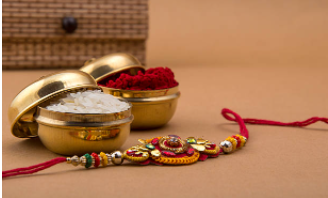
The ideal way to absorb and experience any new place is to immerse yourself in the local environment and indulge in their cuisine. Any trip to a new place is incomplete without paying a visit to the local food joints and indulging in native delicacies. As we continue our food trail around the world, after South Korea, our next destination is the middle eastern country of Lebanon.
People all over the world know Lebanese food through the local variation of the famous lamb shawarma (lamb or chicken meat slow-cooked for hours on a skillet and wrapped inside a pita with a fresh yogurt sauce and pickled vegetables). Dishes like falafel (savory deep-fried chickpea nuggets), pita bread, sheesh taouk, hummus and shakshuka poached eggs have been popularized by celebrity chefs all over the world and are available widely.
However, these dishes are generally altered to match the palates of the locals and the authentic taste of Lebanon rarely gets the glory. That brings up the question: What is authentic Lebanese food? [caption id="attachment_972" align="alignnone" width="1920"]
 Delicate buttery layers of filo pastry in baklava generously garnished with pistachios is the only way to serve this
Delicate buttery layers of filo pastry in baklava generously garnished with pistachios is the only way to serve thisdelicacy. (Image credit: Pixabay)[/caption]
What makes Lebanese food so unique?
A glimpse into the origin and identity of authentic Lebanese cuisineThe journey to any new place starts with getting a little insight into the past. Lebanese cuisine dates back to the era of the Greeks and Romans. This traditional cuisine finds its roots in the Levant region yet appeals to the palate of people all around the globe. The flavors are heavily internationalized due to the influence of multiple foreign civilizations like the Ottoman Turks and French that reigned there.
Heaps of fresh herbs, creamy yogurt, rich ashta cream, pungent garlic, a generous drizzle of olive oil, tart sumac and flavorsome za’atar are vibrant flavors that find their place in the Lebanese cuisine.
The staple spices
Demystifying the staple spices without which any Lebanese kitchen would be incomplete Za’atar spice blend and deep red sumac (Image credit: Pixabay)
Za’atar spice blend and deep red sumac (Image credit: Pixabay)
Za’atar
Za'atar is a blend of thyme, sumac, toasted sesame and sea salt. This spice is a core ingredient in most Lebanese dishes. Manoush, a popular Lebanese breakfast staple consists of flatbread layered with za’atar and extra virgin olive oil.
Sumac
This tangy ground spice is made from Mediterranean sumac berries that add tartness to dishes, like lemon, minus the sourness. Sumac is one of the base ingredients in a lot of spices and sauces and is also used in salad dressings.
Meet at the mezze table
Socialize, share, drink and eat at the family table Assortment of dishes in a mezze platter (Image credit: Pixabay)
Assortment of dishes in a mezze platter (Image credit: Pixabay)
Lebanese meals endorse feelings of family and ideals of hospitality. Meals begin with a mezze which comprises of an array of colorful, flavorful dishes, salads and dips. Mezzes, unlike hors d'oeuvres and antipasti, can be enough to fill one’s stomach up like a complete meal, especially when accompanied by some kebab and meat dishes.
Tabbouleh, fattoush, hummus, Baba ganoush, falafel, flatbreads, pickled vegetables are commonly part of a mezze platter. Mezzes are not only food starters but conversation starters as well. The entire family or group of friends gather around the table to indulge in large sharing plates of food and wholesome conversations. Food brings a sense of belonging and induces immense gratification at a dining table.
What is in a mezze platter?
Levantine dips served by the bowl
Classic dips that are served in large quantities in a Lebanese mezze platterBaba Ganoush
Made from roasted mashed eggplant this appetizer is smoky, acidic, tart and simply delicious. A combination of tahini, olive oil, lemon juice, garlic, paprika and cumin defines the flavors of this dip. It is best enjoyed with some pita crisps, carrot slices and cucumber sticks.
Labneh
Essentially made from strained Greek yogurt, this Levant dip is the middle eastern alternative for cream cheese. This delectable creamy cheese spread is served with a generous drizzle of olive oil and sprinkled with some zesty za’atar spice.
 Fresh hummus topped with tahini and peanuts (Image credit: Pixabay)
Fresh hummus topped with tahini and peanuts (Image credit: Pixabay)
Hummus
Hummus is a classic creamy chickpea dip with nutty tones, that comes from the sesame tahini, and is emulsified with olive oil. A dollop of hummus goes a long way. This dip is so versatile that it finds its place in salads and main dishes alike.
Wholesome greens on the table
Popular Lebanese salads that you can prepare quickly for a healthy treat Tabbouleh heaped with parsley (Image credit: Pixabay)
Tabbouleh heaped with parsley (Image credit: Pixabay)
Substantial amounts of green salads find their place in a Lebanese meal. Cutlery is sparingly used inside the kitchen and the dining table. Hands are the medium of choice for eating and tossing ingredients in large bowls. These salads can be eaten by itself or wrapped in wholesome pita bread. If you want to increase the health quotient, simply scoop it up with pieces of romaine lettuce.
Tabbouleh
Tabbouleh is best described as a heap of chopped herbs, which is majorly parsley and fresh mint. It also includes tomatoes, shallots and fibrous cooked bulgur (cracked buckwheat) or quinoa. This salad which is rich in fiber, protein, vitamins and minerals, is a fabulous accompaniment for kebabs, kibbeh and kaftas.
Fattoush
Fattoush consists of crisp pita chips, leafy romaine, plump tomatoes, onions and radish dressed in pomegranate molasses, lemon juice, garlic, salt, some tart sumac and dried mint. The many textures in this salad take your taste buds on a new journey. The use of pomegranate molasses instead of the traditional balsamic in salads gives it an unique flavor. This dish is a staple at every meal.
Hot on the Grill
Authentic Lebanese meat dishes that you must try if you find yourself in Lebanon on your next tripKibbeh
Kibbeh is a freshly ground blend of raw meat mixed with bulgur, onion paste and spices. It is traditionally eaten raw with pita bread. But variations of baked, stuffed or deep-fried variations of kibbeh are also commonly made.
 Lahmebajin with ground meat (Image credit: Designed by Freepik)
Lahmebajin with ground meat (Image credit: Designed by Freepik)
Lahmebajin
Translated to meat on dough, Lahmebajin is a Lebanese take on the Italian pizza. It is a simple yeast-based flatbread that is topped with spiced ground meat and vegetables like onion and tomatoes. It is heavily spiced with paprika, za’atar, cinnamon and cumin and tastes slightly sweet. Serve it hot out of the oven and garnish it with fresh cilantro, mint, lemon juice and some olive oil.
Clear the table for desserts
Let’s explore the famous baked delights of Lebanon that will surely make you salivate just by their descriptionsThe Lebanese do not have a fixed dessert course in their meal, despite having a fair share of sweet bakes and desserts. They consume fruits and coffee at the end of the meal, but sweets are interspersed between all the courses. Anyone with a sweet tooth would unanimously agree that this is the most appropriate way to eat desserts.
Lebanese sweets are extremely rich and indulgent. Layers of buttery filo pastry, walnuts, cashews, pistachios and ashta are essential components of any baked delicacy in Lebanon. But these are incomplete without being submerged in a concoction of rose water and sugar syrup.
Baklava
This beloved Lebanese dessert is a sticky mixture of pine nuts and cashews or pistachios. It is topped with a dense layer of butter-laden filo pastry, and baked till it turns golden and crisp. The baked baklava is glazed with sugar syrup infused with rose water. The multilayered crunchy croissant-like pastry with caramelized roasted nuts tastes divine.
Ashta
Ashta is a type of clotted cream that is derived from the top of milk simmered with lemon juice. This cream can be consumed by itself as a dessert. It finds its place in a lot of popular desserts as a filling or topping.
 Dome shaped Ma’amoul cookies dusted with sugar (Image credit: Pixabay)
Dome shaped Ma’amoul cookies dusted with sugar (Image credit: Pixabay)
Ma’amoul
Ma'amoul is an ancient dome-shaped shortbread cookie that is filled with nuts and dried fruits. It is baked during festive celebrations. They are made in various shapes to distinguish between the different fillings inside the cookie.
Namoura
Namoura is a traditional semolina cake soaked in sugar syrup and topped with almonds or shaved coconut. This is a moist sweet equivalent of the Rava cake that is found in India. This soft cake is made with semolina, yogurt (which makes it light), yeast ( which adds to the spongy texture) and then topped with sugar syrup, that gives it the distinctive sweet taste.
Lounging at a lunch table with a native cuisine teaches you about the people, history, festivities and hospitality of a new country. You discover new stories, culture and traditions as you read through blogs of locals and bake dishes in your own home. You might have to wait until your next trip to Lebanon to experience and absorb the vibe completely. But you can start your exploration of the culture and tastes in your home kitchen.
Check out this hummus recipe - a healthy dip with an Indian twist! This blog was contributed by Tanushree Pillai.










